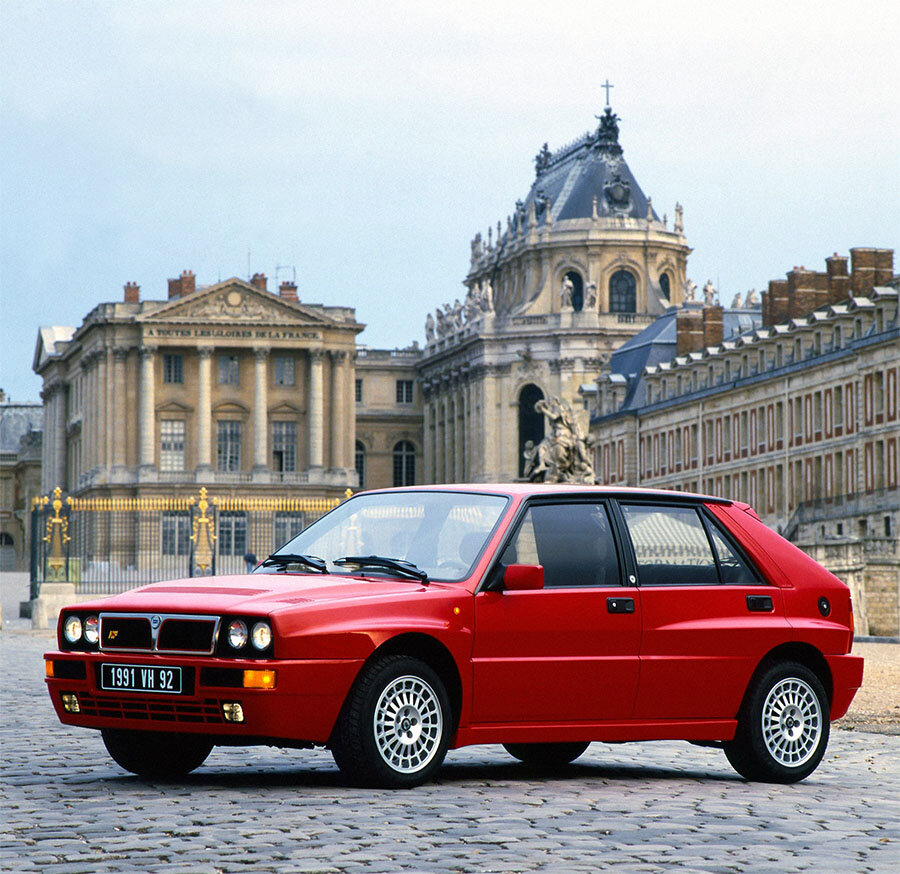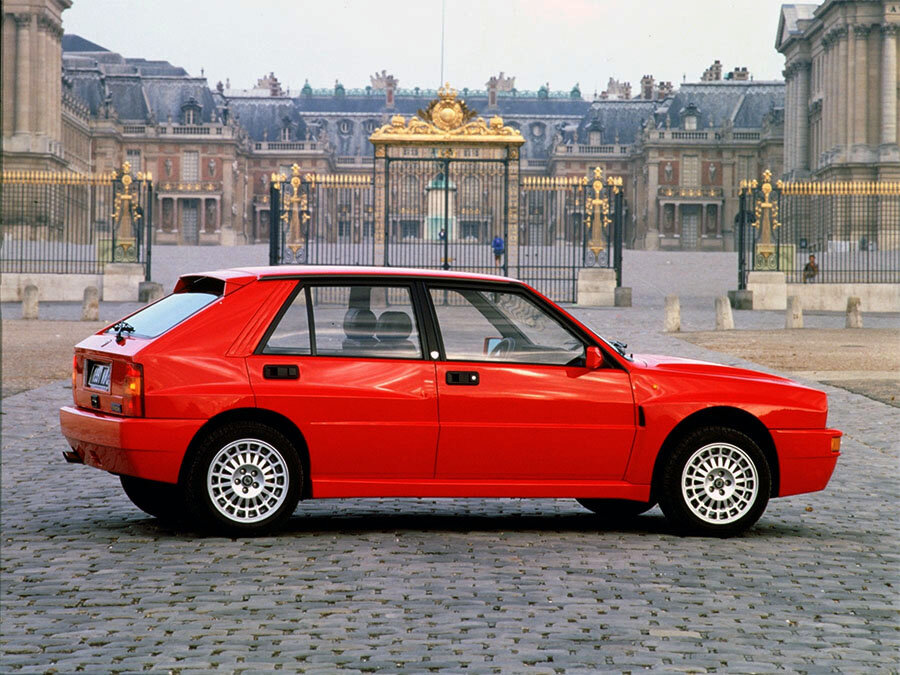Guide: Beefed Up & Back Out for One Last Fight - a Historical & Technical Appraisal of the Lancia Delta HF Integrale Evoluzione 1
/BACKGROUND
By the early 1990s, an onslaught of Japanese manufacturers had entered the World Rally Championship. The most successful of these was Toyota whose Celica GT-Four driven by Carlos Sainz secured the 1990 Driver’s Championship.
Lancia then re-took both Driver and Manufacturer titles by the slenderest of margins in 1991.
To ensure they stayed on top in 1992, the Delta HF Integrale was given its biggest revamp to date.
When it was officially launched at the Frankfurt Motor Show in September 1991, around 2000 examples of the new Integrale Evoluzione had already been completed.
Lancia were confident the mandatory 5000 units required for Group A homologation would be produced in time for the 1992 season.
For this latest incarnation of the Delta HF, Lancia focused on improvements to stability, grip and handling because the two-litre 16-valve Aurelio Lampredi-designed engine was still considered among the best in its class.
CHASSIS
The Integrale’s basic layout was unchanged: a steel unibody chassis with coil sprung independent suspension via MacPherson struts at the front and double transverse arms at the rear. Hydraulic shocks were installed along with anti-roll bars at each end.
Updates for the Evoluzione included reinforced struts and bushes, larger diameter dampers with extended travel plus bigger and stiffer springs. An aluminium strut brace was also fitted.
At the back, the geometry was revised with stronger struts, thicker transverse arms and dampers with extended travel.
The wider 7.5 × 15-inch alloy wheels featured a new multi spoke design to assist brake cooling. They now used five fixing bolts instead of four.
Track was widened by 54mm at the front and 60mm at the rear.
Brake discs were enlarged to 281mm at the front and 251mm at the back. Fixed four-piston aluminium calipers were now installed as well.
Steering became more responsive thanks to a larger steering box. The Evoluzione also benefited from a supplementary radiator to cool the power steering fluid.
ENGINE
By re-mapping the engine management and fitting a more efficient single outlet exhaust system, output rose by 5% to 210bhp at 5750rpm (up from 200bhp at 5500rpm). Otherwise, the inline four cylinder engine with its DOHC 16-valve head remained largely unaltered.
Displacement was 1995cc thanks to a bore and stroke of 84mm and 90mm respectively.
Compression stayed at 8.0:1 and Weber IAW fuel injection was once again employed.
Garrett supplied the T3 turbocharger and the torque rating was now 220lb-ft at 3500rpm (instead of 220lb-ft at 3000rpm).
BODYWORK
Cosmetically, Lancia made a variety of alterations that resulted in an even more aggressive appearance.
Most obvious were the big new flared fenders which were now formed in a single pressing.
Headlights were smaller but brighter and deeper body-coloured sills further updated what was by now a twelve year old design.
Particular attention was paid to brake and engine cooling. To this end, the front bumper intakes were opened up and vents cut were from the back of each front fender.
Other new features included a wider power bulge, an adjustable roof spoiler, a Group A-style fuel filler, a new back bumper with single outlet exhaust cavity and an HF badge on the front grille.
INTERIOR
By contrast, interior updates were limited.
A three-spoke leather-covered Momo steering wheel was introduced along with coloured instruments and a re-shaped gear shifter.
The rectangular instrument binnacle housed a large speedometer and rev counter in between which were smaller gauges for turbo boost, battery condition, fuel and water temperature. There were also 14 different warning lights. Additional read outs for oil pressure and oil temperature were located alongside the vents mounted in the centre of the dash.
Fabric upholstery was standard.
OPTIONS
Optional extras included leather trim, air conditioning, ABS brakes and a sunroof.
WEIGHT / PERFORMANCE
Weight rose by 8kg to 1300kg. Because of the wider frontal area, top speed stayed at 137mph.
The 0-62mph time dropped from 6 to 5.8 seconds.
However, these figures belied the true scale of progress for the Evoluzione was a big step forward in terms of driveability, roadholding and safety.
GERMAN & SWISS VERSIONS
Unfortunately, Lancia had still not developed a catalysed version of the 16-valve engine. This meant cars destined for markets like Germany and Switzerland had to run cat-equipped 181bhp eight-valve motors.
PRODUCTION
Evoluzione production continued until early 1993 by which time 5619 had been built. All were left-hand drive.
SPECIAL EDITIONS
To boost sales and help recoup Lancia’s development costs, four special edition Integrales were made on the Evoluzione platform.
MARTINI 5
First to arrive was the Martini 5 in January 1992. 400 were built to celebrate Lancia’s 1991 World Rally Championship (the fifth consecutive time a Delta had secured the Manufacturer’s title).
Each car was painted white with body-coloured wheels and Martini stripes to the flanks and tailgate.
New high-backed HF-embossed Recaro front seats were upholstered in black alcantara with red stitching.
Red seat belts were fitted and each car received a numbered plaque on the centre console plus a ‘World Rally Champion’ badge on the tailgate.
VERDE YORK
More subtly configured was the Verde York edition of which Lancia built 200 units.
All came with special dark green paint, high-backed Recaro front seats and tan leather upholstery.
A World Rally Champion badge was added to the tailgate along with a numbered plaque on the centre console.
CLUB ITALIA
Next was the Club Italia, 15 of which were built for members of the Italian Lancia Owners Club.
All came painted Lord Blue with high-backed HF-embossed Recaro front seats. Upholstery was in red leather.
Other cabin upgrades included drilled alloy pedals and a push button starter.
White Club Italia text was located on the rear spoiler and leading edge of the bonnet. There was also an enamelled Club Italia shield on each front fender.
Under the hood, the cam covers were painted HF blue and yellow and the engine bay featured a plaque that bore the first owner’s name.
An additional numbered plaque was located on the centre console.
MARTINI 6
The last Evoluzione special edition was a second batch of Martini-liveried examples released to celebrate Lancia’s 1992 World Manufacturers title.
Known as the Martini 6 edition, 310 were manufactured.
Each Martini 6 was painted white with matching wheels. Martini stripes were applied to the sides and tailgate along with HF decals to the C-pillars.
Additional graphics included Martini Racing text on the rear spoiler, World Rally Champion text at the base of each front door and a large adhesive Lancia shield on the roof.
Inside, high-backed HF-embossed Recaro front seats were fitted along with red seatbelts, a carbonfibre gear surround and a numbered plaque on the centre console.
Upholstery was light blue alcantara with red stitching.
These cars also came with a 6 World Rally Champion badge on the tailgate.
COMPETITION HISTORY
Lancia secured the Manufacturer’s title in 1992 but lost the Driver’s crown to Toyota’s Carlos Sainz.
Integrales won eight of the 14 events that year. However, Lancia drivers Didier Auriol and Juha Kankkunen took points off one another which meant Sainz (the undisputed Toyota number one) was able to snatch his second Driver’s championship in three years.
1992 proved to be the Delta’s final season as a works car and it retired as the most successful machine in rally history.
Since its 1987 debut, the unassuming hatchback had notched up six consecutive WRC Manufacturer’s titles. There were also Driver’s titles for Juha Kankkunen (1987 and 1991) and Miki Biasion (1988 and 1989).
Despite Lancia’s works rally programme ending in late 1992, the Integrale’s commercial popularity meant there was sufficient demand one final incarnation.
As a result, the Evoluzione 2 was released in June 1993.
Text copyright: Supercar Nostalgia
Photo copyright: Lancia - https://www.lancia.com




































